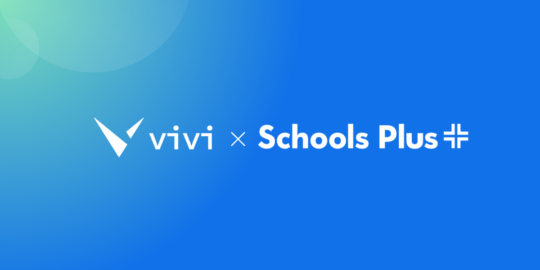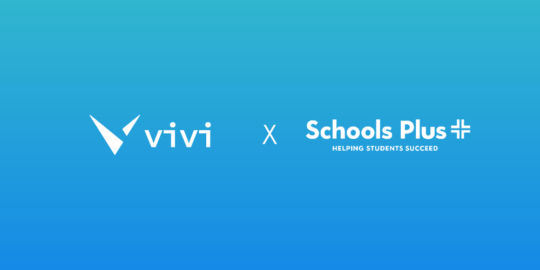The presentation technology formerly used at Sydney’s Oakhill College would be familiar to any teacher who’s fumbled with cables and remote controls at the front of a classroom. And to any school IT manager who’s answered their calls for assistance. Oakhill’s projector-based set-up served its intended purpose, but it was cumbersome to operate and switching between users was slow. The school also used interactive whiteboards, but their functionality was limited. “I could’ve had an overhead projector do the same thing,” notes Saxon Bowles, the school’s Head of Science.
Unsurprisingly, there was a growing appetite at Oakhill for wireless projection, not only to make life easier for the teachers, but to give them more flexibility to move around the classroom and engage with students during lessons. The tipping point came when it was discovered that upgrading teacher laptops to the new MacBook Pro was going to require additional cabling. The time had come to find a wireless presentation solution.
Evaluating wireless presentation options
Oakhill’s Head of ICT, Gary Hastings, researched different options for the school and narrowed the selection down to Vivi and one other system. This other system promised a good range of features, but when the school was given a demonstration, it failed to deliver. “The key features didn’t work, … [the] interface was poor, the performance was poor, the screen didn’t look very clear,” Hastings recalls. Vivi showed much more potential and, as Bowles was one of the school’s most enthusiastic advocates for wireless presentation, Vivi receivers were installed in two of his science labs for testing and evaluation.
Getting Vivi up and active in the labs was a straightforward process. “I love that [Vivi] can hook into our active directory for authentication,” says Hastings. “That was easy to set up, and it worked straight away. The deployment was great.” This cleared the way for the system to be put through its paces in a live educational setting.
Exploring new approaches to teaching
The immediate change that Bowles noticed in the Vivi-enabled science labs was the ability to move around the classroom, and interact with students, without losing control of the presentation system. This meant that he could respond to the students’ needs and questions, encourage them to use the shared display to present to their peers, and shape the lesson to achieve the best learning outcomes.
“You’ve got access to be mobile, you’ve got access to move your focus point. And once you start doing that, [learning] becomes student centered, not teacher centered,” says Bowles.
The ease with which he could use Vivi to mirror students’ devices to the display system meant that more students were getting the opportunity to share their work, receiving feedback and gaining confidence in the process. But in addition, Bowles started seeing how the increased emphasis on peer presentation was helping some of his students understand difficult concepts, by hearing them reinterpreted and explained from a peer point of view. “You see the lightbulbs go on,” he says. “It’s because it’s in their words, it’s in their terms, and they see their peers able to apply [the knowledge].” So as more students were able to present to their classmates, the whole group benefited. For Bowles, it was “enlightening.”
Rating Vivi’s technical performance
While Vivi was being tested with the students in the science labs, Hastings focused on its technical performance. Oakhill’s IT team made full use of Vivi’s Admin Portal for tasks such as managing rooms and devices and reviewing usage data, but it was the system’s ability to consistently achieve robust in-classroom performance that gave Hastings the confidence to roll it out across the school.
“The main thing I was looking for was how reliable [Vivi is] in terms of a teacher being able to get a connection in a classroom. It had to be as good as, if not better than, plugging a cable in,” he says. “The reliability was the clincher, in the end.”
That high level of performance is being maintained even now that Oakhill has 90 Vivi receivers operational schoolwide. For Hastings, the ability to centrally manage the network of receivers via the Admin Portal is a major advantage. “We monitor them all,” says Hastings. “We set-up our own dashboard in the IT office that shows all our Vivis and … [if one goes offline] the team … get a little push notification to their phone, and they dive on those ones pretty quickly.”
Transitioning to Vivi schoolwide
As Vivi was rolled out across the school, teachers were encouraged to use the system in a number of ways – introductory emails were sent, there were hands-on learning sessions, signs were put up in every classroom with instructions on how to connect, and the IT helpdesk installed a Vivi-enabled display for teachers to practice on and use for troubleshooting with the IT team.
The multipronged strategy worked. After one month, as many as 80% of teachers had used Vivi in the classroom. Seeing all kinds of teachers, not just the young and technologically savvy, embrace the new system told Hastings that it was safe to permanently remove the old classroom cabling, making Vivi the primary point of connection with the projectors.
Recommending Vivi
Asked whether he would recommend Vivi to other schools, Bowles is emphatic: “Oh, I’d definitely recommend it. You’re no longer bound to the desk, you’re no longer bound to cables that hold you in,” he says. “It seems that [students are] more willing to get engaged in the lesson.” Looking at it from the IT team’s perspective, Hastings is no less enthusiastic.



